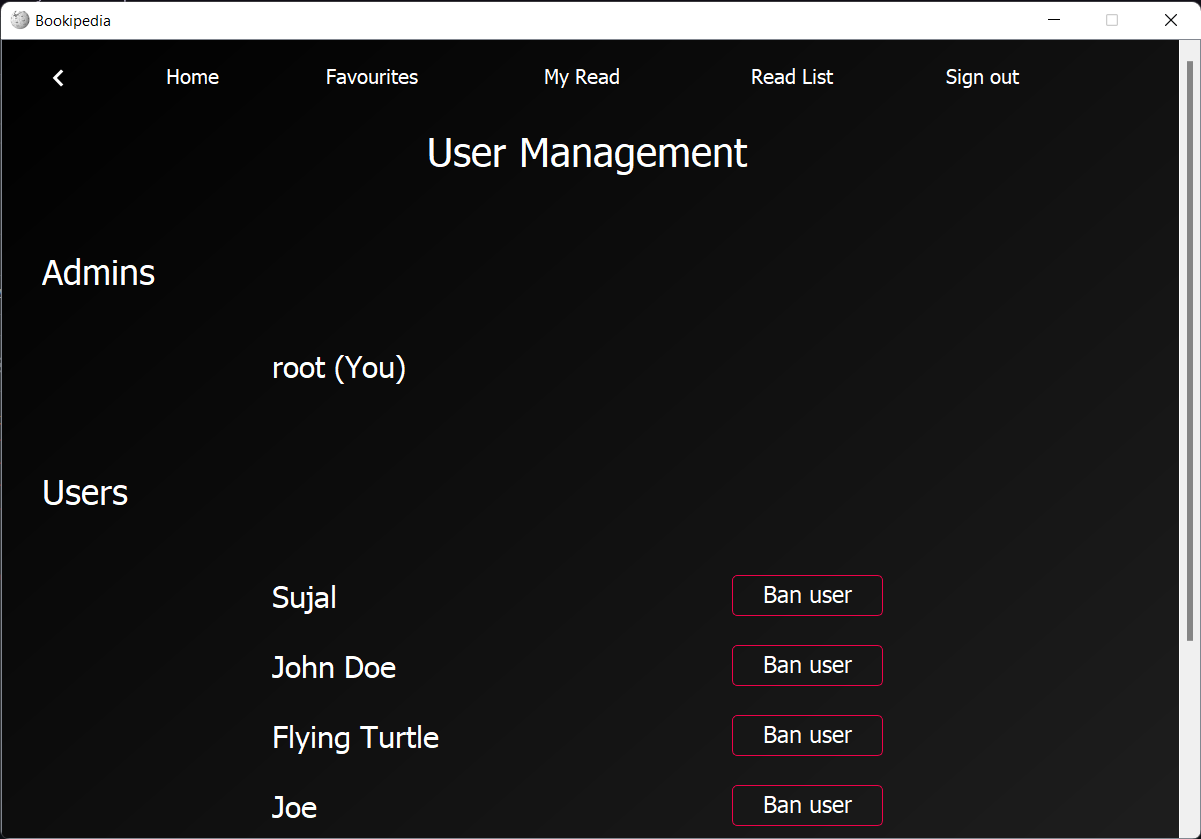Bookipedia: Developing a Desktop Application for Book Management and Community Engagement
During my final year of high school, I developed Bookipedia, a desktop application that combines book discovery, personal library management, and community interaction. This article details the development process, architecture decisions, and key features of the application.
Overview
Bookipedia is a Python-based desktop application that integrates with the Google Books API to provide comprehensive book information while allowing users to manage their reading lists and engage in literary discussions. The application emphasizes user experience, data persistence, and community management.
User Interface and Core Features
Authentication System

The application implements a secure authentication system with credential persistence using binary file storage. The interface provides both login and registration capabilities, with input validation and error handling.
Search and Discovery

The home interface features a search functionality that leverages the Google Books API to provide users with access to an extensive database of literary works. The implementation includes:
- Real-time search results
- Multithreaded thumbnail loading for performance optimization
- Efficient data caching mechanisms
Book Information Management

Each book entry provides comprehensive information including:
- Bibliographic details (title, author, publisher)
- Publication metadata
- Full description
- Reading status management options:
- Favorite designation
- Read status tracking
- Reading list integration
Community Engagement

The application facilitates user interaction through a comment system that enables:
- User discussion threads
- Comment management
- Content moderation
- User engagement tracking
Administrative Controls

The administrative interface provides robust user management capabilities:
- User account oversight
- Moderation tools
- Account status management
- System-wide content control
Technical Implementation
Architecture
The application is built on a three-tier architecture:
- Presentation Layer: PyQt5-based user interface
- Business Logic Layer: Python core functionality
- Data Persistence Layer: MySQL database integration
Key Components
- Frontend Framework: PyQt5
- Backend Language: Python 3.x
- Database: MySQL
- External Integration: Google Books API
- Authentication: Custom implementation with binary storage
Notable Features
-
Performance Optimization
- Multithreaded image loading
- Efficient data caching
- Optimized database queries
-
Data Management
- CRUD operations for user data
- Relationship mapping between users and books
- Comment system implementation
-
Security Measures
- Password protection
- User permission levels
- Content moderation capabilities
Development Insights
The development process provided valuable experience in several areas:
- Database design and optimization
- User interface development
- API integration
- Threading and performance optimization
- Security implementation
- Community management systems
Future Development
Planned enhancements include:
- Algorithm-based book recommendations
- External platform integration
- Achievement system implementation
- Enhanced social features
- Mobile platform adaptation
Implementation Access
The application is available for download via the GitHub repository. Administrative access can be obtained using the credentials:
- Username: root
- Password: pass
Conclusion
Developing Bookipedia as a high school project provided practical experience in application development while creating a functional tool for literary enthusiasts. The project demonstrates the potential for combining technical implementation with practical utility in student development work.
The application serves as both a practical tool for book management and a learning experience in software development, showcasing the possibility of creating meaningful applications during secondary education.